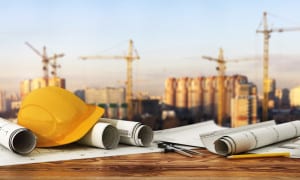The city of Boston is nearly halfway to hitting Mayor Marty Walsh’s goal of creating 69,000 units of new housing by 2030, Walsh’s office said this week. However, that increase is not being matched by development outside of the city.
The city has now permitted 30,442 units since 2011, chiefly concentrated downtown and in South Boston, with substantial chunks also permitted in the South End, Allston/Brighton and East Boston. So far this year, the city said 81 percent of permits pulled were for projects outside of downtown.
The city is lagging a bit behind in its goal to create 15,820 income-restricted affordable units in the same timeframe, with 6,004 permitted so far. Those units are concentrated in a similar area, with downtown, Roxbury, South Boston, the South End and Allston/Brighton making up over two-thirds of them. As part of the push, the city also plans to purchase around 1,000 apartments and restrict them as affordable housing. If the plan is successful, Boston will maintain its current ratio of one affordable unit for every five market-rate units.
“Boston’s working families are the backbone of our city, and helped build Boston into the diverse, welcoming city we are today,” Walsh said in a statement. “In Boston, we’re growing faster than any time in the last 50 years, and it’s important that our housing production keeps pace to support our middle class. My priority is to ensure everyone can stay in the neighborhoods they love, and continue to call Boston home.”
In a presentation emailed to reporters, the administration cited figures that showed rent growth slowed in the city in the first two quarters of the year, however independent research shows rents are expected to climb again despite the addition of around 5,000 new apartments to the market this year. Rent control is becoming a hot political topic, and is emerging as key part of demands from progressive state legislators whose support House Speaker Robert DeLeo is seeking to pass a measure sponsored by Gov. Charlie Baker that would make it substantially easier for towns and cities to approve multifamily projects.
The city’s presentation also noted the serious imbalance between permitting in the city compared to the suburbs. Citing 2011-2018 U.S. Census Bureau data, the presentation noted Boston permitted 62 percent of all new units in an area largely within Route 128, stretching from Quincy to Melrose and from Winthrop to Waltham. Five nearby cities – Cambridge, Chelsea, Everett, Somerville and Watertown – made up another 22 percent of the 42,131 units permitted in that region during that period.
“For Greater Boston employers to continue to be able to attract and retain a talented workforce, it is critical that we support the creation of affordable and accessible housing options,” Greater Boston Chamber of Commerce President and CEO Jim Rooney said in a statement. “I applaud the Walsh Administration for the significant progress that has been made to create a range of new housing opportunities and to maintain Boston’s competitive edge. The Chamber and our members look forward to continued partnership with the administration and leaders throughout the region to achieve Mayor Walsh’s ambitious housing goals.”
Statistics released by the mayor’s office showed Boston’s new units are largely rentals and are concentrated around public transit.
Three in four of the 30,442 total permitted units were apartments. Of the ownership units, a little more than half were one bedroom or smaller, and the other half being two-bedroom units or larger. When completed, the 30,442 new units are expected to accommodate around 60,500 residents.
Of the permitted units, nearly two out of three are highly transit accessible and within 1/4 mile or a five-minute walk to major transit, and three out of four units are within a half-mile or a 10-minute walk from an MBTA stop or commuter rail.
To help pay for the affordable units, the city has invested more than $164 million in funding from Inclusionary Development Policy linkage payments and Community Preservation Act money in cooperation with the state and other housing entities. The city has also made 3 million square feet of real estate available for affordable housing construction, the mayor’s office said.




 |
| 


